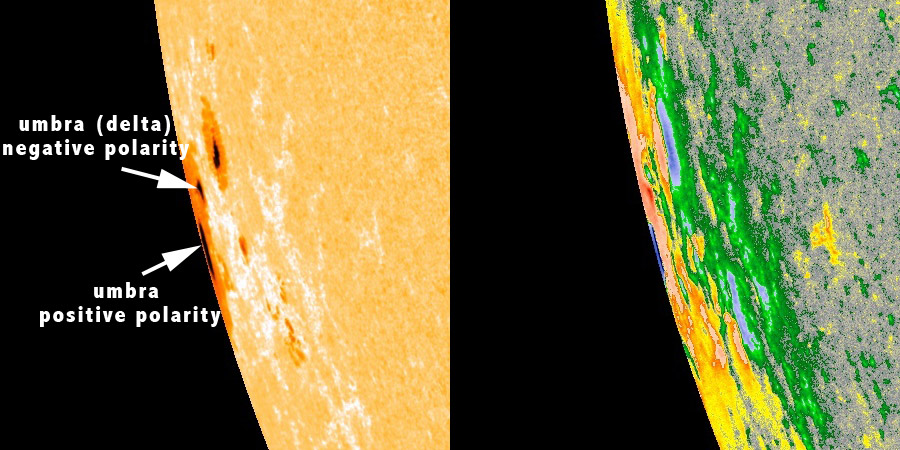The return of sunspot regions 2172 and 2173
Friday, 17 October 2014 10:36 UTC

The past few days were very exciting with an active region approaching the limb that caused multiple M-class flares. This was the announcement of two returning regions that today have become visible on the visible solar disk.
In the previous rotation old regions 2172 and 2173 were the source of multiple M-class and C-class flares with the largest one on october second which was an M7.3 class solar flare. Read our previous story about those regions here.
Now that the old regions re-emerged onto the visible solar disk, it's time to see what remains of those regions after the activity on the farside of the sun, including a very long duration M2 (probably stronger) event on october 14th. Old region 2173 (the most southern of the two) is almost completely vanished and all that is left of it are big faculae. Old region 2172, now numbered as region 2192, has developed further while it transited the farside of the Sun and looks like a very big and very complex sunspot region with a strong delta structure in the northern part of the central penumbral soup. Normally delta structure can't be seen good when sunspots are close to the limb but with this region it's already very clearly visible in the magnetogram.
Due to the magnetic complexity of the region, a major event can't be excluded. Keep following us on our channels and website for further updates and live alerts.
Thank you for reading this article! Did you have any trouble with the technical terms used in this article? Our help section is the place to be where you can find in-depth articles, a FAQ and a list with common abbreviations. Still puzzled? Just post on our forum where we will help you the best we can!
Latest news
Latest forum messages
Support SpaceWeatherLive.com!
A lot of people come to SpaceWeatherLive to follow the Sun's activity or if there is aurora to be seen, but with more traffic comes higher server costs. Consider a donation if you enjoy SpaceWeatherLive so we can keep the website online!

Space weather facts
| Last X-flare | 2024/03/28 | X1.1 |
| Last M-flare | 2024/04/19 | M1.0 |
| Last geomagnetic storm | 2024/04/16 | Kp5 (G1) |
| Spotless days | |
|---|---|
| Last spotless day | 2022/06/08 |
| Monthly mean Sunspot Number | |
|---|---|
| March 2024 | 104.9 -19.8 |


